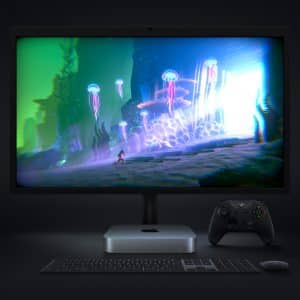Apple is known for its meticulous prototyping process. Many innovations undergo multiple iterations before a final product is approved for mass production. Features that don’t meet Apple’s strict quality standards are often shelved or postponed, even if they’re groundbreaking.
During the development of the iPhone 16, many features were conceptualized, tested, and ultimately set aside. While we experience numerous exciting upgrades, some prototypes provide a sneak peek into the future of iPhones.
In-Screen Touch ID
One of the most anticipated features was the return of Touch ID, integrated directly into the iPhone screen. Despite extensive testing during the prototyping phase, Apple encountered technical challenges. Ensuring seamless functionality while maintaining the premium design Apple is known for proved more difficult than expected.
Though this feature didn’t make the final iPhone 16, it’s clear that Apple is still exploring biometric advancements. With advancements in sensor technology, we could see an in-screen Touch ID in future models.
Enhanced Camera Zoom Capabilities
Apple consistently pushes the boundaries of mobile photography, and the iPhone 16 was no exception. Rumored prototypes included enhanced zoom capabilities, with a telephoto lens offering 10x optical zoom, aiming to rival competitors like Samsung’s Galaxy line.
However, the complexity of integrating such a powerful zoom lens while maintaining the sleek iPhone design led Apple to drop the idea. Instead, the iPhone 16 received a refined, more practical camera upgrade, focusing on software-driven improvements and optical quality rather than an extreme zoom feature.

Longer Battery Life and Wireless Charging
The iPhone 16 saw several improvements to battery life, but Apple was initially experimenting with even more ambitious plans during prototyping. Apple considered introducing an entirely portless design, relying solely on wireless charging and data transfer. Although it seemed like a future-forward move, concerns over charging speed, the current state of wireless technology, and the transition period for users led Apple to abandon this idea—for now.
Portless designs and extended battery lives are still on Apple’s radar, likely to re-emerge as wireless charging becomes more efficient and widespread.
Revolutionary Display Technology
Display improvements are often a central feature in iPhone upgrades, and the iPhone 16 was expected to include cutting-edge display technology. Rumors suggested Apple experimented with a more efficient microLED display that could improve brightness, contrast, and color accuracy while consuming less power. Unfortunately, Apple faced technical issues and production delays with this advanced display technology, and it didn’t make it into the final release.
The microLED display may be a hallmark feature of future iPhones, as it aligns with Apple’s goals of improving performance and energy efficiency.

Haptic Feedback and Advanced AR
Another ambitious feature that failed to make the iPhone 16’s final version was advanced haptic feedback combined with augmented reality (AR). Apple reportedly tested a design that would enhance the user experience with tactile feedback during AR interactions, giving users the sensation of “touching” virtual objects.
While this feature didn’t make it into the iPhone 16, it could still play a significant role in Apple’s AR and VR future, particularly focusing on wearable devices like the Apple Vision Pro.
Portless iPhone
The shift towards a portless iPhone has been a long-discussed idea within the tech community. With Apple’s emphasis on wireless technology, the iPhone 16 was speculated to be the first portless iPhone, relying solely on wireless charging and Bluetooth for all connectivity. This would make the device more water-resistant and eliminate the need for physical ports.
However, Apple postponed the portless iPhone due to concerns over wireless charging speeds, user adaptation, and industry infrastructure. Nonetheless, the concept is likely to be revisited in future models as Apple continues to push the boundaries of design innovation.
What’s Next for Apple?
The features that didn’t make it into the iPhone 16 are not necessarily gone forever. Apple often revisits these scrapped ideas and refines them for future models. As technology advances and consumer demands evolve, we may see some of these innovations appear in the iPhone 17 or later versions.
Apple’s prototyping process is a testament to the company’s commitment to delivering products that balance cutting-edge technology with a refined user experience. While not every idea makes it to market, Apple consistently finds ways to incorporate new technology into future releases.
The iPhone 16 delivered several exciting upgrades, but many features were left on the cutting room floor. Whether in-screen Touch ID, enhanced camera zoom, or portless designs, Apple’s focus on quality and user experience means some innovative features will have to wait.
What do you want Apple to bring to the iPhone? Let us know on X @AppleMagazine.









